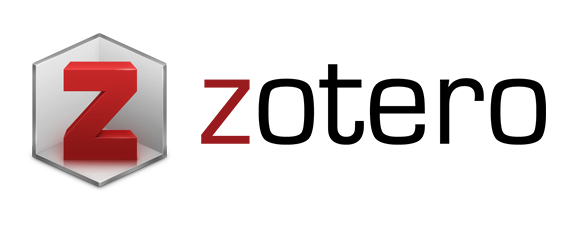UI/UX Design of Mobile-Based Human Resource Management Applications Using the Design Thinking Method (Study Case: Habibi Garden)
Abstract
Habibi Garden is a company operating in agricultural technology. The current issue at Habibi Garden is the absence of a human resource management application. COOs and Agronomists face operational challenges. COOs struggle to track project progress in the field and sometimes forget to log their attendance. Agronomists have difficulty organizing team tasks as some employees forget to submit assignments, and various assignments, reports, and projects are jumbled in Google Drive. Additionally, employees have to search for reimbursement links mixed with other assignment links, leading to potential errors. This research aims to develop a UI/UX design for a mobile-based human resource management application for Habibi Garden to aid employees in operational activities. The method used is Design Thinking which consists of 5 stages, namely Empathize, Define, Ideate, Prototype, and Test. The results show that the interface design performs well. The effectiveness parameter scored 93.75% for COOs and 91.25% for Agronomists. The efficiency parameter achieved 0.04 goals/sec for COOs and 0.06 goals/sec for Agronomists. User satisfaction, measured using the SUS questionnaire, averaged 88 for COOs, categorized as excellent and graded B, and 77 for Agronomists, categorized as good and also graded B. Design Thinking enables designers to create application solutions that truly fit user expectations and needs by understanding user problems, needs, and behavior through the empathize stage. Based on the prototype design that has been designed in this study, the UI/UX generated can serve as a foundation for the development of mobile applications based on Human Resource Management.
Keywords
Full Text:
PDFReferences
S. Hasibuan, Manajemen Sumber Daya Manusia: Pendekatan Non Sekuler. Surakarta: Muhammadiyah University Press, 2000.
M. S. P. Hasibuan, Manajemen Sumber Daya Manusia. Jakarta: Bumi Aksara, 2008.
G. Dessler, Human Resource Management. New York: Pearson, 2019.
S. Tsauri, MSDM (Manajemen Sumber Daya Manusia). Jember: STAIN Jember Press, 2013.
A. M. Lukman & D. Aryanto, “Aplikasi Edukasi Ekosistem Pengenalan Dunia Hewan Untuk Anak Usia Dini Berbasis Android,” Jurnal Sains Dan Manajemen, vol. 7, no. 2, pp. 58–65, 2019.
Amimah, “Evaluasi User Interface (UI) dan User Experience (UX) aplikasi JRku menggunakan User Centered Design (UCD),” B.S. Thesis, Dept. Information Systems, UIN Syarif Hidayatullah Jakarta, Indonesia, 2021. [Online]. Available: https://repository.uinjkt.ac.id/dspace/handle/123456789/56457
M. N. E. Ghiffary, T. D. Susanto, & A. Herdiyanti, “Analisis komponen desain layout, warna, dan kontrol pada antarmuka pengguna aplikasi mobile berdasarkan kemudahan penggunaan (studi kasus: aplikasi olride),” Jurnal Teknik ITS, vol. 7, no. 1, pp. 143–148, 2018.
R. A. Almayda, “Perancangan UI/UX aplikasi ayo beraksi (belawan bersih anti korupsi) dengan metode design thinking,” Automata, vol. 3, no. 2, pp. 1–8, 2022.
J. Brooke, “SUS: A retrospective,” Journal of Usability Studies, vol. 8, no. 2, pp. 29–40, 2013.
I. G. N. D. Paramartha, et. al, “Perancangan UI/UX aplikasi banten online menggunakan metode design thinking,” Jurnal Teknologi Informasi dan Komputer, vol. 9, no. 2, pp. 166-177, 2023.
Hasmin & J. Nurung, Manajemen Sumber Daya Manusia (MSDM). Solok: Mitra Cendekia Media, 2021.
T. Schlatter & D. Levinson, Visual Usability: Principles and Practices for Designing Digital Applications. Waltham: Elsevier, 2013.
D. D. Maharani, “Perancangan user experience menggunakan metode design thinking pada prototype website sedekah jumat barokah,” B.S. Thesis, Dept. Informatics, UIN Syarif Hidayatullah Jakarta, Indonesia, 2021. [Online]. Available: https://repository.uinjkt.ac.id/dspace/handle/123456789/64966
J. J. Garrett, The Elements of User Experience: User Centered Design for The Web and Beyond, 2nd Edition. Berkeley: New Riders, 2011.
D. Kelley & T. Brown, An introduction to Design Thinking. Institute of Design at Stanford, 2018.
H. Plattner. “An Introduction to Design Thinking PROCESS GUIDE.” Standford.edu. https://web.stanford.edu/~mshanks/MichaelShanks/files/509554.pdf (accessed Sep. 14, 2024).
J. W. Creswell, Educational Research: Planning, Conducting, and Evaluating Quantitative and Qualitative. Boston: Pearson Education, 2012.
G. Guest & K. M. Macqueen, Handbook for Team-Based Qualitative Research. New York: Altamira Press, 2008.
N. Muhadjir, Metodologi Penelitian: Paradigma Positivisme Objektif, Phenomenologi Interpretif, Logika Bahasa Platonis, Chomkyist, Hegelian & Hermeneutik, Paradigma Studi Islam, Matematik Recursion, Set-Theory & Structural Equation Modeling dan Mixed Edisi VI Pengembangan (6th Ed.). Yogyakarta: Rake Sarasin, 2011.
S. J. Gentles, et. al, “Sampling in Qualitative Research: Insights from An Overview of The Methods Literature,” The Qualitative Report, vol. 20, no. 11, pp. 1772–1789, 2015.
F. S. Hamza, H. Tolle & I. Arwani, “Perancangan pengalaman pengguna aplikasi percetakan pt. ajitama berbasis mobile dengan metode design thinking,” Jurnal Pengembangan Teknologi Informasi dan Ilmu Komputer, vol. 5, no. 10, pp. 4645–4657, 2021.
T. K. Situmorang, H. M. Az-Zahra & A. D. Herlambang, “Evaluasi usability pada aplikasi m-kantorpos dengan menggunakan metode usability testing,” Jurnal Pengembangan Teknologi Informasi dan Ilmu Komputer, vol. 3, no. 5, pp. 4349–4356, 2019.
F. Fariyanto & F. Ulum, “Perancangan aplikasi pemilihan kepala desa dengan metode ux design thinking (studi kasus: kampung kuripan),” Jurnal Teknologi dan Sistem Informasi (JTSI), vol. 2, no. 2, pp. 52–60, 2021.
DOI: https://doi.org/10.15408/aism.v7i2.38206
Refbacks
- There are currently no refbacks.

This work is licensed under a Creative Commons Attribution-ShareAlike 4.0 International License.
EDITORIAL ADDRESS:
Department of Information Systems, Faculty of Science and Technology,
Universitas Islam Negeri (UIN) Syarif Hidayatullah Jakarta
Faculty of Science and Technology Building, 3rd Floor, 1st Campus, Universitas Islam Negeri (UIN) Syarif Hidayatullah Jakarta
Jl. Ir. H. Juanda No. 95, Ciputat Timur, Kota Tangerang Selatan, Banten 15412, Indonesia.
Tlp/Fax: +622174019 25/+62217493315.
E-mail: aism.journal@apps.uinjkt.ac.id, Website: https://journal.uinjkt.ac.id/index.php/aism

This work is licensed under a Creative Commons Attribution-ShareAlike 4.0 International License.
Applied Information System and Management (AISM) | E-ISSN: 2621-254 | P-ISSN: 2621-2536
https://journal.uinjkt.ac.id/index.php/aism






